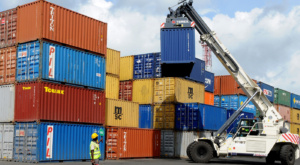
Rwanda coffee one of the favorite products in U.S.
East African bloc has found a stronger business ally to replace the United States of America and trade between the two blocs will but keep shrinking- a survey has warned.
A recent report- Building the Future “A look at the economic potential of East Africa” that was produced by U.S. Chamber of Commerce shows that East African countries trade with the U.S. remains limited despite deepening relationship between the blocs.
The report indicates that there is, in East Africa a possible shift of trade with the Asian markets.
Trade between the United States and the bloc increased by 103% from 2010 to 2015, and in 2014, U.S. exports to East Africa rose to more than $2 billion (Exports totaled $2.0 billion; Imports totaled $743 million), while in 2015 the US had $2.0 billion in total (two way) goods trade with the region.
“But there are still significant obstacles limiting U.S. trade with East Africa. While most tariffs have been removed, non-tariff barriers (NTBs), bottlenecks, and infrastructure constraints have limited U.S. businesses’ ability to trade with the region,” the report said in part.
EAC game changers
The report says that East Africa has been the fastest-growing region on the continent over the past decade and all regional countries had higher growth rates than the United States by 2014, and U.S. exports to East Africa rose to more than $2 billion.
However, the report indicates that despite a growth in trade in the regional countries and the U.S. in 2014, the region’s trade with U.S. has been marginal and represents only 5% of total East African trades with the world.
This has partly been caused by the region seeking trade ties with China, India, and the European Union (EU), regional integration efforts, several large-scale infrastructure projects that are underway aiming at vastly improving trade within the region, and improvement in removal of non-Tariff barriers.
China and India have become two of the region’s largest trading partners and for example Kenya, the United States’ leading trading partner in the region, imported 14 times as many goods from China than it did from the United States in 2014.

Cargo handling at Mombasa port in Kenya
The report also fears that in the next few years, the EU could see its share of East African trade increase as its new reciprocal trade agreement comes into force.
The EAC is currently negotiating an Economic Partnership Agreement (EPA) with the EU, which will increase bilateral trade between the two regional organizations. The deal was finalized in October 2014. However, ratification has been delayed until January 2017.
The report suggests that the only way out the U.S. can remain a strong business ally with the region, would be by tapping into the existing development projects the region has undertaken.
Among other opportunities is included 16 Northern Corridor Integration Projects (NCIP) estimated at $14.8 billion, tourism and energy resource needs in the region which has population of over 145.5 million as per the 2010 census.
Tanzania, Kenya, Ethiopia, and Rwanda are expected to add between 40,000 MW and 50,000 MW on their respective national power grids by 2030, and the private sector of these countries is expected to play a role in financing and services.
Where does Rwanda stand?
In 2015, the United States’ share of imports among EAC countries ranged from 1.8% to 4.0% with Rwanda having the least of imports and Burundi, the highest import dependence.
Even with this Rwanda beats Burundi six times in its trade dealings with the rest of the world according to the report, but Rwanda remains a fertile ground due to its investment and political policies compared to the rest.
It’s from this perspective that, in a visit to Rwanda in January this year, the U.S. Secretary of Commerce, Penny Pritzker announced a special arrangement through which Rwanda will become a strategic ally in the quest to reinforce trade partnership with Africa.
Having signed the only Bilateral Investment Treaty with the US in the region, the report refers to Rwanda as widely considered one of ‘Africa’s 21st century success stories’ contrary to , Burundi’s which has been marred by economic and political instability, and continues to lag behind its EAC neighbors.
Rwanda has been listed as a priority countries enlisted as a beneficiary for Tax-Free exports to the United States of America under the U.S. Annual Product Review of June 2016- which added 27 travel and luggage goods from developing countries on the list of products that receive duty-free treatment in U.S.
Analysis of the report shows that East Africa’s economic development largely mirrors the growth of Asia’s new emerging economies- Bangladesh, Pakistan, the Philippines, and Vietnam.
For example Ethiopia, Rwanda, and Tanzania all had higher GDP growth rates than any of these four countries in 2014 and Kenya’s GDP per capita alone exceeded that of Bangladesh and Pakistan.
In addition, Ethiopia, Rwanda, and Tanzania all had higher GDP growth rates than any of the four Asian countries in 2014 with Rwanda and Tanzania having the highest GDP growth of 7.0 percent in the same period while Uganda had lowest at 4.8 percent.

